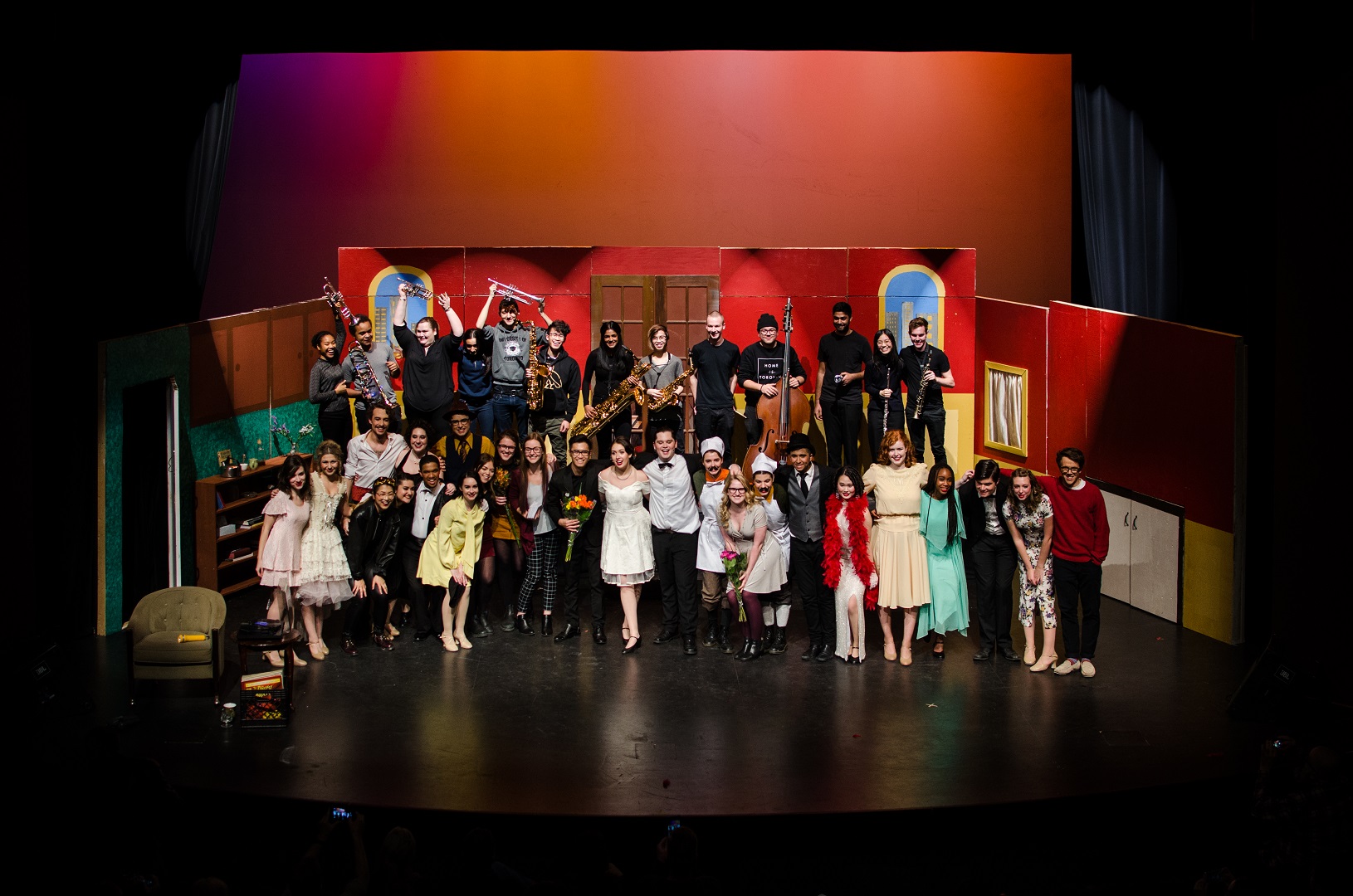As I wrap up work on VCDS’ production of The Drowsy Chaperone at Isabel Bader Theatre and continue work on UC Follies’ production of Spring Awakening at Hart House Theatre, I find myself thinking that I really ought to document my standard micing procedure, as well as my experiences dealing with problems and exceptional situations as they crop up. This, of course, is mostly for myself–it’s useful to have a record of my work that I can refer back to and improve on–but I also do believe that this could become a useful resource for anyone with more than a passing interest in theatrical audio production. I’m sure to expand on this series as I do more shows and continue building my knowledge base, but there’s a lot of stuff to consider here; micing actors is just as much a part of this job as mixing foldback sound to conductor and band monitors, as is attending rehearsals to get an understanding of the cast. For now, I’ll start with some of your responsibilities as FOH engineer during pre-production.
How good a show sounds is a direct result of two things, and two things only: how well your performers do on the day of the performance, and how well you mix that particular show. That’s it. Everything leading up to the run of the show is in order to minimize problems and distractions during the show so that everyone can put out their best work.
To that end, the work of a mixer starts very early on in the production process. Acquire a script ASAP and attend rehearsals whenever possible, until you have an understanding of the show as a whole and can gauge the needs of your cast. Creating a mic list is the ultimate goal here: you want to collaborate with your director and music director in order to determine who needs reinforcement, and allocate resources accordingly.
For smaller shows, or shows that revolve around a limited number of strong singers such as The Last Five Years, this is rather simple: your cast list is your mic list. However, larger shows with an ensemble are far more common, and tend to be a bit more complicated; you have to determine who in the ensemble needs to be reinforced based on a rather exhaustive list of factors. These include, but are not limited to: their singing ability, the number of spoken lines they have, their time on-stage, and of course the budget of the production. For instance, UC Follies’ production of Dogfight featured several ensemble members with only a handful of speaking lines that wouldn’t have needed reinforcement. However, there were a few scenes in which they sang solos backstage while the leads had choreography onstage, and so they had to be miced regardless. Your music director should be able to tell you fairly early on in the process who best to mic in the ensemble, and from that you can finish fleshing out your mic list.
Similarly, you should ask the music director to create a band plot–a diagram that depicts the locations of your band members and instruments, as well as what sorts of inputs they’ll need–as soon as possible. This is to facilitate the creation of an input list for the patching of the band. Keep in mind that any one musician may be playing multiple instruments, some of which may require multiple inputs themselves. While the number of actors that need to be miced is fairly inflexible, there can be some wiggle room when wiring in a band; for instance, an acoustic drumkit can eat up 5-10 channels, while an electric kit only uses one (or two if it’s DI’ed in stereo). Be sure to avoid making assumptions about what your band needs, especially if you have a limited number of channels on your patch board or console to work with. Here’s a neat little tool for making band plots that you might find useful.
I think I’ll have to end it at that for now; marking up a script and micing up a band are topics that deserve their own discrete posts. Hopefully this provides a general overview of what to keep in mind during pre-production! There’s a lot to think about, but working closely with your music director and stage manager is integral to a quality production.
A side note: during bows, actors generally gesture up at the booth wherever it may be located in the theatre, in order to acknowledge the work that the stage manager, lighting designer, sound mixer, and all other crew members have put into the show. I find it interesting that despite the sound being what makes or breaks a show, it’s such an intangible thing; in contrast to set, lighting, or props, nobody comments about the sound until something goes wrong. I think that’s the way it should be, though–for us, the highest form of flattery is when the gig goes perfectly, and your work serves only to facilitate the talent onstage.

